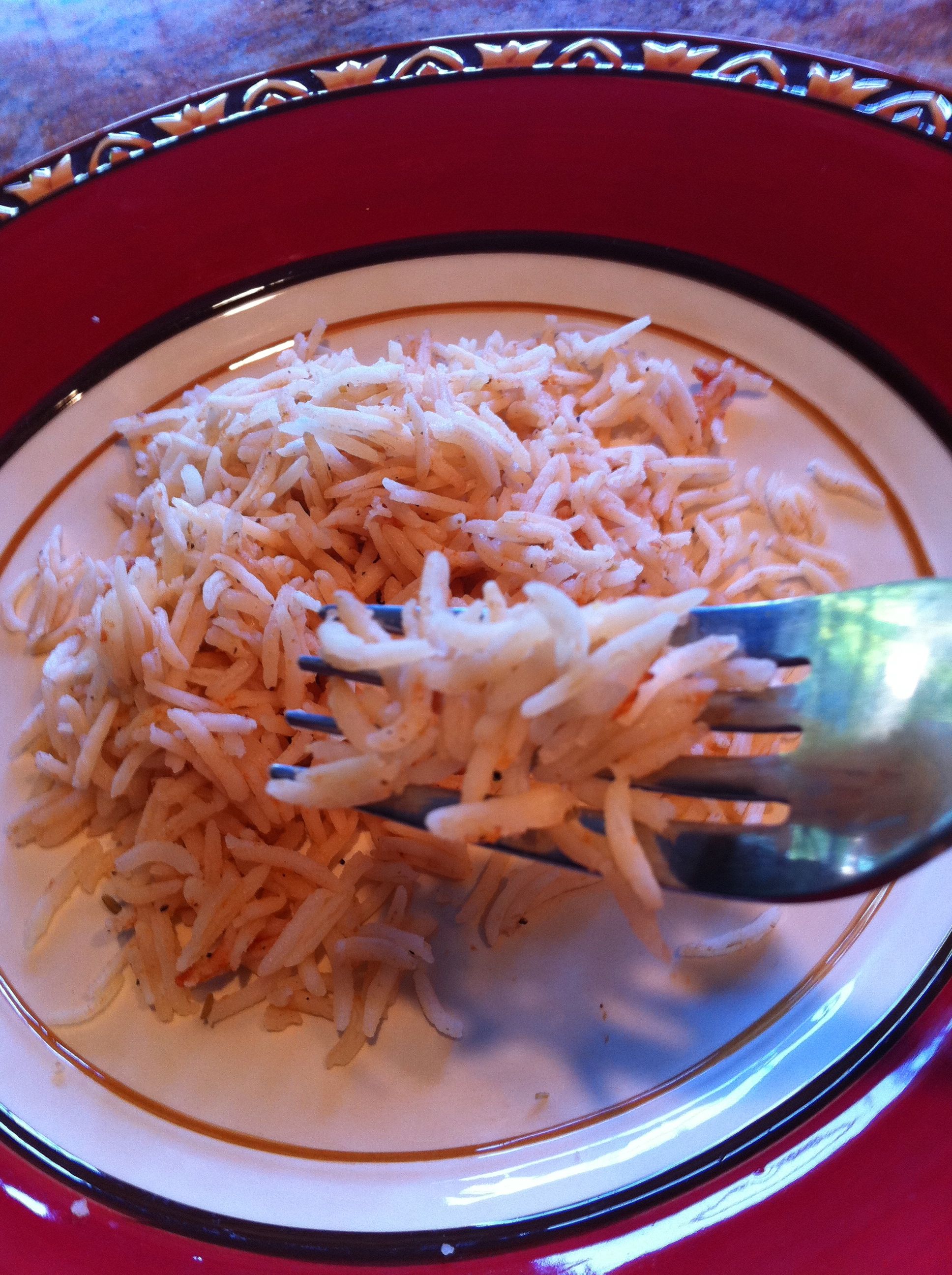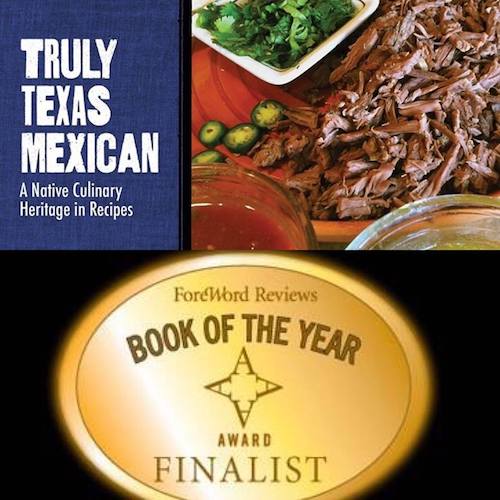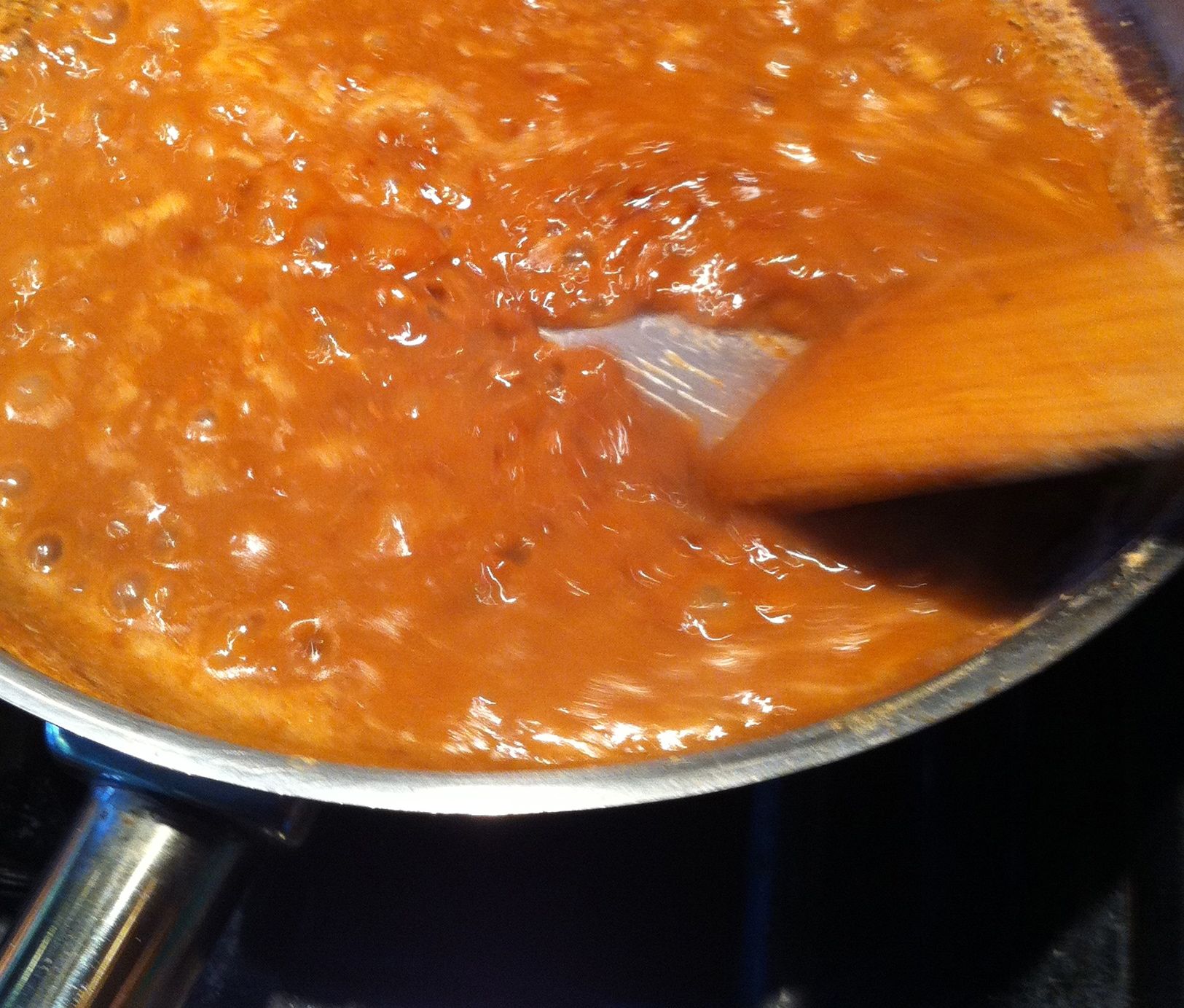Refried Beans and Texas Mexican Rice

The term, “refried beans” is a misnomer. The correct translation of the Spanish, “frijoles refritos,” is “well fried beans.” No fat required.
Properly cooked beans and rice are a delicious meal.They’re also complete, nutritious protein. The recipes below rely on basic, straightforward technique. It’s the way families have been cooking them at home for generations.

Just remember 3 things:
1) Heat develops the flavor. Pay close attention to your fire.
2) No fat. Well, ok you do actually add fat, but very little, to boost the heat. The fat also adds a nice smoothing, mellow mouth feel. But be judicious and don’t hide subtle flavors with fat.
3) Easy on the seasonings. They are there to enhance, not dominate the flavor.
The rice is fluffy. It has a full taste with just a bit of color from tomatoes, a slight undercurrent of cumin and, most importantly, no heavy fat taste to hide the flavor. The beans cooked as in the recipe below will have a rich, robust umami taste. (this and other recipes are adapted from the book, “Truly Texas Mexican: A Native Culinary Heritage In Recipes” published by Texas Tech University Press.

Mexican Rice Recipe (serves 4)
Ingredients
1 Cup long grain rice
Optional 1 Tbsp Canola oil
2 cups water
1/2 tsp cumin
1/4 tsp black peppercorns
1/2 tsp salt
1 garlic clove
1 small tomato, diced and crushed
Method
1. In a molcajete make a paste of the cumin, black peppercorns, salt and garlic.
2. In a deep skillet (add the oil if you like to) cook the rice over medium heat until it begins to take on some color.
3. Add some of the water to the molcajete to remove all the ingredients and pour into the rice, being careful with the splatter. Add the crushed tomato and its juice.
4. Bring the water to a boil, cover and lower the heat to very low.
5. Cook, covered, for 15 minutes or so until the rice is fully cooked. Try not to remove the cover more than once as you check for doneness.
The rice will be tender, fluffy and gently aromatic of cumin and black pepper.
Refried Beans Recipe — (makes 6 cups of beans and broth)
Ingredients
3 cups pinto beans, picked over to remove debris, then washed
6 cups water
1/8 peeled white onion
1 peeled garlic clove
1/2 Tbs salt
Method
1. Nothing to cooking the beans, really.
Just place all the ingredients except the salt in a crockpot and cook for 6 to 8 hours or so until they are completely tender. I do this at night and go to sleep. If on the stovetop, boil them for 3 hours, maybe 4, depending on the beans. Keep adding water so they don’t dry out or burn. If you want a foolproof method of testing for doneness, hold a couple of the beans in the palm of your hand and blow on them. If the skin peels off a bit, they’re done just right. Thanks to my mother and sisters who kept showing me this. Add the salt and adjust accordingly.
2. To make “frijoles refritos,” “refried beans,” place the amount of beans you want to cook in a skillet with an equal amount of water and bring to the boiling point. Turn the heat down and cook on a medium simmer. I cringe at translating the name as “refried beans” because it induces non-spanish speakers to misunderstand and go for heavy fat frying.
Eating overly greasy beans is not in our tradition. In a later post we’ll discuss when and how it was that high fat entered Mexican restaurant food in Texas.
3. Here’s the flavor: Mash the beans with a masher and as you do so notice that the heat at the bottom of the skillet is browning the bean paste. This is the Maillard reaction, a complex change in the molecular structure of the protein in the beans that happens around 300º Fahrenheit.  Keep scraping the bottom of the skillet and brown the beans slowly. Add a little more water if it becomes dry. The color will deepen and the flavor will become rich, hinting of bacon or beef. The secret is: scrape, scrape, scrape. The addition of oil to the skillet helps to increase the heat and the browning but you don’t need it for flavor. I don’t use any at all, but you can add one Tablespoon of Canola oil if you like. Keep browning the beans in this way slowly for about 20 minutes. Don’t burn them. The taste will have depth.
Keep scraping the bottom of the skillet and brown the beans slowly. Add a little more water if it becomes dry. The color will deepen and the flavor will become rich, hinting of bacon or beef. The secret is: scrape, scrape, scrape. The addition of oil to the skillet helps to increase the heat and the browning but you don’t need it for flavor. I don’t use any at all, but you can add one Tablespoon of Canola oil if you like. Keep browning the beans in this way slowly for about 20 minutes. Don’t burn them. The taste will have depth.
Restaurants usually don’t serve beans with such developed and sumptuous flavor because it”s easier (and doesn’t require staff training) to just purée them in a blender and serve. Some fast food places will add some bacon in the cooking for strong flavor. I can understand having to make those decisions, but to me, these obvious fixes seem heavy-handed and the outcome is nothing at all like the real thing. I’ve worked at restaurants where I’ve shared this simple technique of cooking beans and it is not at all difficult for the staff. Vegan Chef Staci Davis’s restaurant, Radical Eats where I worked and introduced this technique, used the technique for their delicious beans. It would be both more healthy and more delicious if more Mexican food restaurants served less fat and more bean flavor.
Let me know what you think.
¡Buen provecho / Bon Appétit!
I happened upon you website when I googled Texas Mexican recipes. I was looking for stuffed poblanos. Wow what an awesome surprise when I found your recipes. I am in cooking heaven and looking forward to my quarantine winter days in Downeaster Maine. You have made my meatless Monday a glorious meal with Mexican rice and pinto bean recipes. Gracias Senor Medrano.
You are welcome, Chris. It makes me feel glad to read that you liked the beans and rice. Have a great day, wishing you health and wellness.
First, I want say thank you! I read an article in NY Times about one of your recipes, but it called for ground beef, which I’m trying to cut back on. So, I searched you out and luckily I found this recipe. As I started cooking the second phase of the beans I have to say I was skeptical about the amount of water, but I persisted and was rewarded with hearty and delicious rice and beans. I really loved that carmelized flavor. Thank you for sharing this slice of your heritage!
Chris
thank you for the response. now I can look for this bean type.
Hi, Susan. I’m glad that the beans turned out so well. The pinto bean is one of the common beans, scientific name, Phaseolus vulgaris. It’s known just as frijol pinto, pinto bean, the Spanish word “pinto” referring to its color. There’s a picture of the pinto bean on this blog, where I write about the pinto bean as the classic bean type for Texas Mexican food: https://adanmedrano.com/pinto-beans-are-philosophically-correct/
I cooked my beans for a very long time. it seemed that some of the beans took a longer time to get soft, and the skin never really opened up as I blew on them, unless they were already cracked open. so I kept on adding water and simmering them. well, as it turned out, I seemed to be doing what you describe we can do to “refry” them, and I used a wooden utensil to scrape the bottom to avoid that they got dry and fastened themselves to the bottom of my copper bottomed casserole. well, the beans achieved that Mallard reaction, as you say, and they turned ut absolutely scrumptious!! to my delight, and to the delight of my girlfriend from Chile, who just at that moment, needed real comfort food, and she was in heaven. my question: what is the botanical name for the type of pinto bean I must look for here in Europe. These pinto beans were brought to megrim San Antonio., Tx. but I have bought some here in Northern Europe called Roseola. they look like pintos bey fo not have that same flavor. can you help me out here? thank you. Susan M. Guerra ( Donna Guerra´s sister from San Antonio as well. this is how I found you)
this is exactly what i wanted!!! thankyou!!!! i cannot wait to make them for a little get together.
What a nice thing to say, Jenny. Thanks. I have such fond memories of the times we worked together. Very happy that you are making delicious Texas Mexican pinto beans!
You are king of beans in my book. I have always used your method since the first day you showed me how easy it was to make these beans!!!